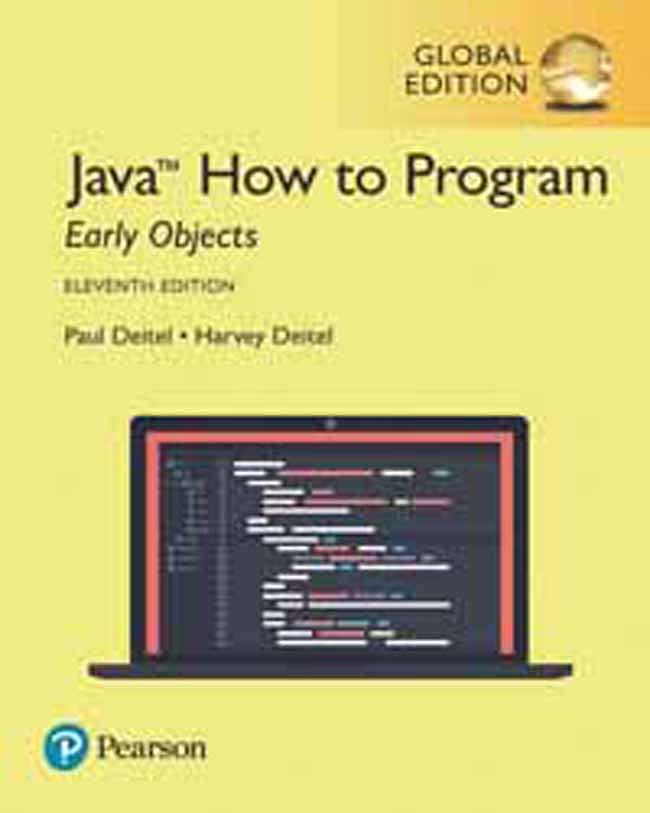內容簡介
內容簡介 For courses in Java programmingThis package includes Pearson MyLab Programming.Unparalleled breadth and depth of object-oriented programming conceptsThe Deitels?groundbreaking How to Program series offers unparalleled breadth and depth of programming fundamentals, object-oriented programming concepts and intermediate-level topics for further study. Java How to Program, Early Objects, 11th Edition, presents leading-edge computing technologies using the Deitel signature live-code approach, which demonstrates concepts in hundreds of complete working programs. The 11th Edition presents updated coverage of Java SE 8 and new Java SE 9 capabilities, including JShell, the Java Module System, and other key Java 9 topics. [Java How to Program, Late Objects, 11th Edition also is available.]This package includes Pearson MyLab?Programming,an online learning system designed to engage students and improve results. Pearson MyLab Programming consists of a set of programming exercises correlated to the programming concepts in this book. Through hundreds of practice problems, the system automatically detects errors in the logic and syntax of their code submissions and offers targeted hints that enable students to figure out what went wrong铘nd why. MyLab should only be purchased when required by an instructor. Please be sure you have the correct ISBN and Course ID. Instructors, contact your Pearson rep for more information.
產品目錄
產品目錄 Ch1: Introduction to Computers, the Internet and JavaCh2: Introduction to Java Applications; Input Output and OperatorsCh3: Introduction to Classes, Objects, Methods and StringsCh4: Control Statements: Part 1; Assignment, ++ and -- OperatorsCh5: Control Statements: Part 2; Logical OperatorsCh6: Methods: A Deeper LookCh7: Arrays and ArrayListsCh8: Classes and Objects: A Deeper LookCh9: Object-Oriented Programming: InheritanceCh10: Object-Oriented Programming: Polymorphism and InterfacesCh11: Exception Handling: A Deeper LookCh12: JavaFX Graphical User Interfaces: Part 1Ch13: JavaFX GUI: Part 2Ch14: Strings, Characters and Regular ExpressionsCh15: Files, Input Output Streams, NIO and XML SerializationCh16: Generic CollectionsCh17: Lambdas and StreamsCh18: RecursionCh19: Searching, Sorting and Big OCh20: Generic Classes and Methods: A Deeper LookCh21: Custom Generic Data StructuresCh22: JavaFX Graphics and MultimediaCh23: ConcurrencyCh24: Accessing Databases with JDBCCh25: Introduction to JShell: Java 9旧 REPLChapters on the WebA. Operator Precedence ChartB. ASCII Character SetC. Keywords and Reserved WordsD. Primitive TypesE. Using the DebuggerAppendices on the WebIndexOnline Chapters and AppendicesCh26: Swing GUI Components: Part 1Ch27: Graphics and Java 2DCh28: NetworkingCh29: Java Persistence API (JPA)Ch30: JavaServer?Faces Web Apps: Part 1Ch31: JavaServer?Faces Web Apps: Part 2Ch32: REST-Based Web ServicesCh33: (Optional) ATM Case Study, Part 1: Object-Oriented Design with the UMLCh34: (Optional) ATM Case Study, Part 2: Implementing an Object-Oriented DesignCh35: Swing GUI Components: Part 2Ch36: Java Module System and Other Java 9 FeaturesF. Using the Java API DocumentationG. Creating Documentation with javadocH. Unicode?I. Formatted OutputJ. Number SystemsK. Bit ManipulationL. Labeled break and continue StatementsM. UML 2: Additional Diagram TypesN. Design Patterns
